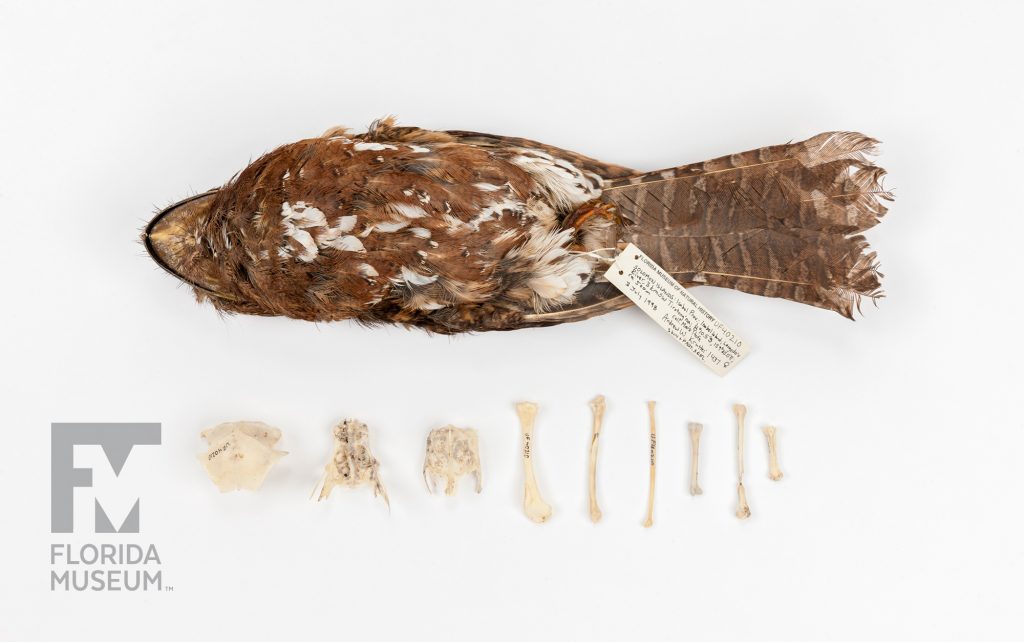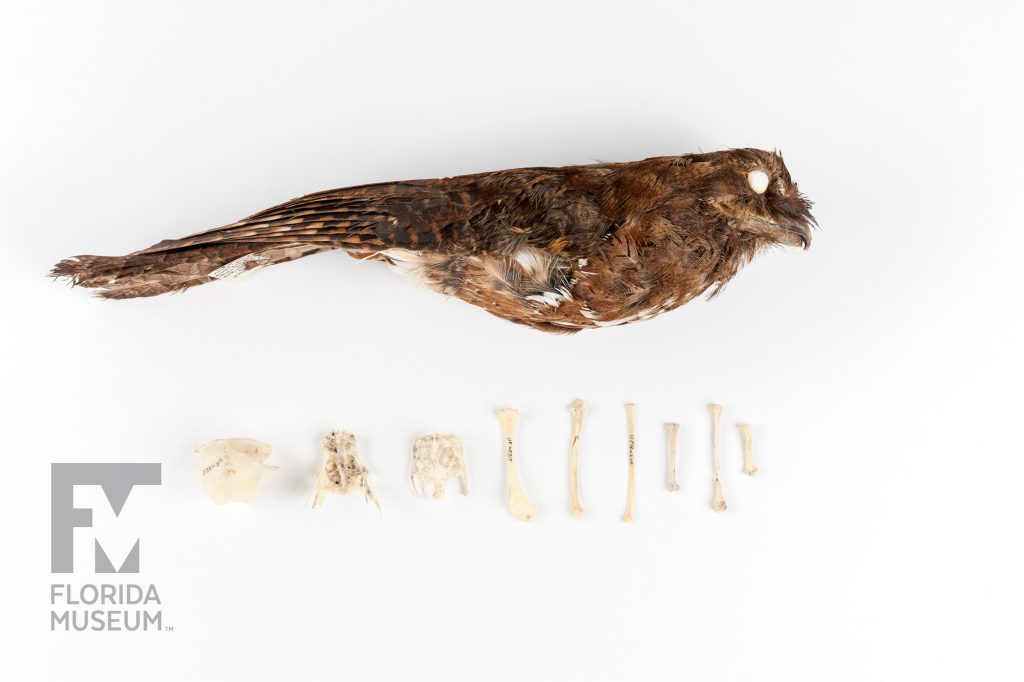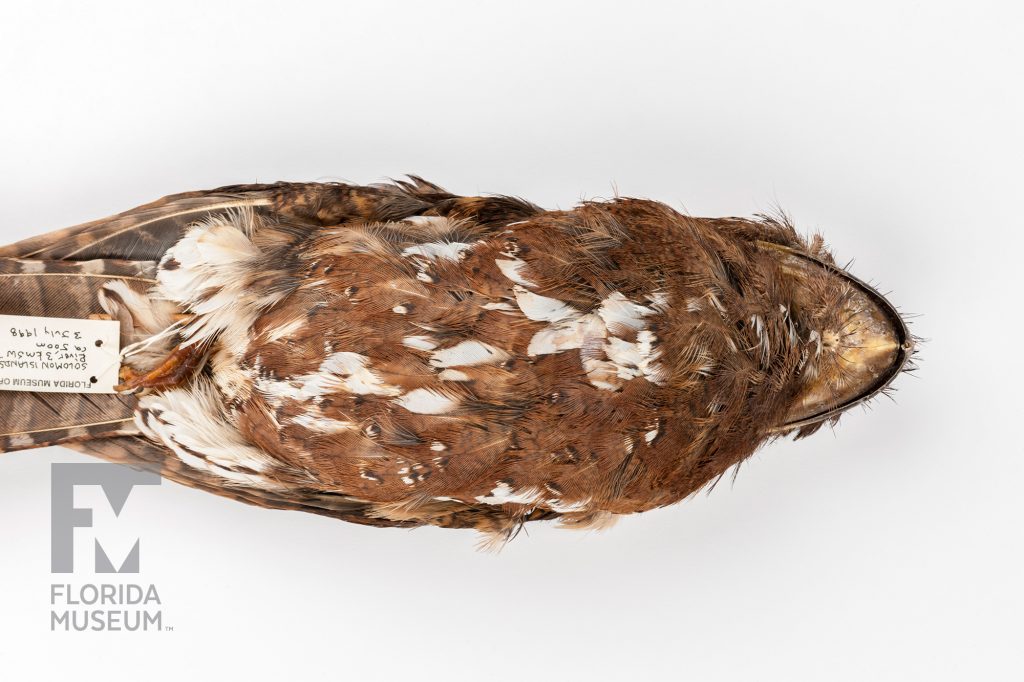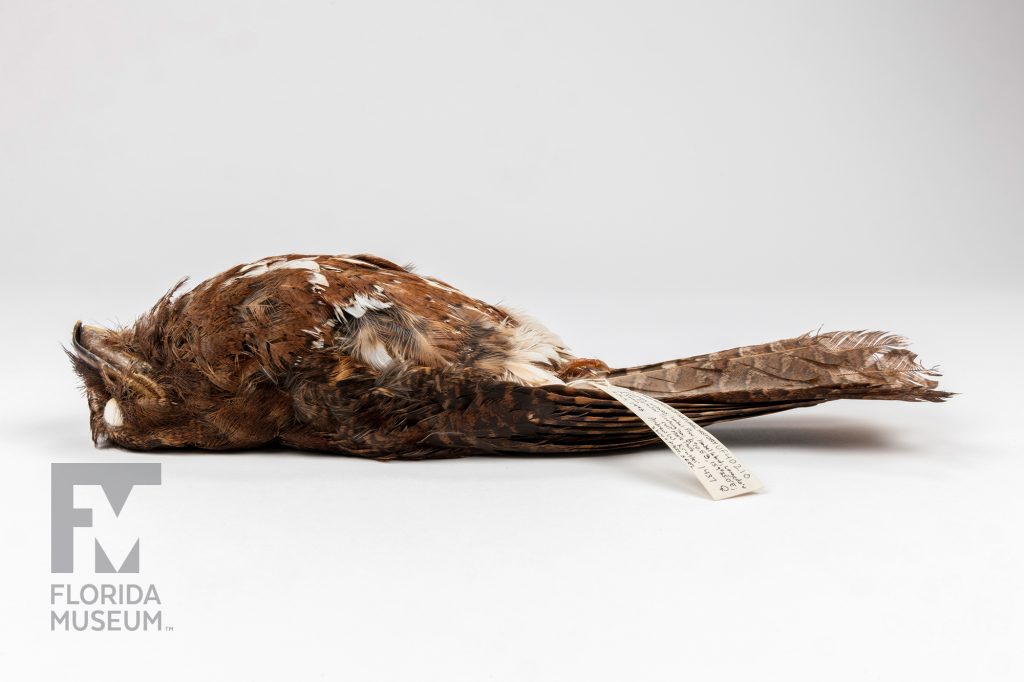The rare Solomon Island Frogmouth was once considered a subspecies of the widespread Marbled Frogmouth. Comparing this specimen’s skin, skeleton and genetics with other frogmouths proved it was a new genus, Rigidipenna – a rare scientific achievement.
Summary
Solomon Island Frogmouth (Rigidipenna inexpextata)
From Solomon Islands, Tropical Pacific, 1998
Collection
Story
Lying a thousand miles across a coral sea from northeastern Australia, the Solomon Islands is one of the least-known places on Earth. Likewise, the cryptic and nocturnal Nightjars and their relatives the Frogmouths, Potoos and Oilbirds, are among the most poorly known bird species.
In 1998 the Florida Museum of Natural History and colleagues at the University of Washington Burke Museum surveyed the birdlife on mountain forests on Santa Isabel in the Solomon Islands. Our local hunter Mark Hafe collected a Frogmouth, which at that time was a little-known subspecies of the Marbled Frogmouth of New Guinea in northern Australia.
From the collected bird I prepared a study skin, saved a partial skeleton and took tissue samples. The skin provided only the seventh specimen of this taxon and these were the first tissue and skeletal specimens ever. On return to the States we published a report of our findings.
Nigel Cleere, author of a monograph on Nightjars and their relatives, contacted me about the Frogmouth from the Solomon Islands and asked me to compare it to other Frogmouths. I compared the skin specimen with a Marbled Frogmouth we recently collected in Papua New Guinea, and discovered several interesting features including that the Solomon Islands Frogmouth had fewer tail feathers, and these feathers were stiffened compared to the Frogmouth from Papua New Guinea. I had Dave Steadman, curator of birds at the Florida Museum, look at the skeletons of these two specimens which were dramatically different as well. We then asked Mike Braun from the Smithsonian Institute, an expert in the molecular systematics of Nightjars, to look at the DNA. He found that not only was the Solomon Islands bird different from other Marbled Frogmouths, it differed dramatically from every other species in the family.
As a result, our team placed a Solomon Islands Frogmouth into a new genus which we called Rigidipenna meaning “stiff feather.” Thus with this new specimen the Frogmouth went from being a subspecies of a widespread species, to being the only member of its genus. These findings illustrate the modern specimens – with tissues and associate skeletal preparations – are imperative for understanding the true biological diversity in the little-known corners of the world.
Andy Kratter
Collection Manager, Ornithology*
Florida Museum of Natural History
Exhibit
On display Sept. 23, 2017-Jan. 7, 2018, Rare, Beautiful & Fascinating: 100 Years @FloridaMuseum celebrated the Museum’s rich history. Each Museum collection was asked to contribute its most interesting items and share the stories that make them special. Though the physical exhibit is closed, this companion website remains online, providing an opportunity to experience the Florida Museum’s most treasured specimens.
Exhibit Area: Objects Tell Stories
Theme: Surprising Biodiversity
 Want to see more? Explore more than 300 breathtaking color photos of plants, animals, fossils and cultural heritage materials from the Florida Museum of Natural History’s collections in the award-winning book All Things Beautiful available from the University Press of Florida.
Want to see more? Explore more than 300 breathtaking color photos of plants, animals, fossils and cultural heritage materials from the Florida Museum of Natural History’s collections in the award-winning book All Things Beautiful available from the University Press of Florida.
*This title was accurate at the time the exhibit was on display in 2017. Please visit the collection website to verify current staff and student information.



